Tomas Nanne: The Viewfinder of Urban Stockholm
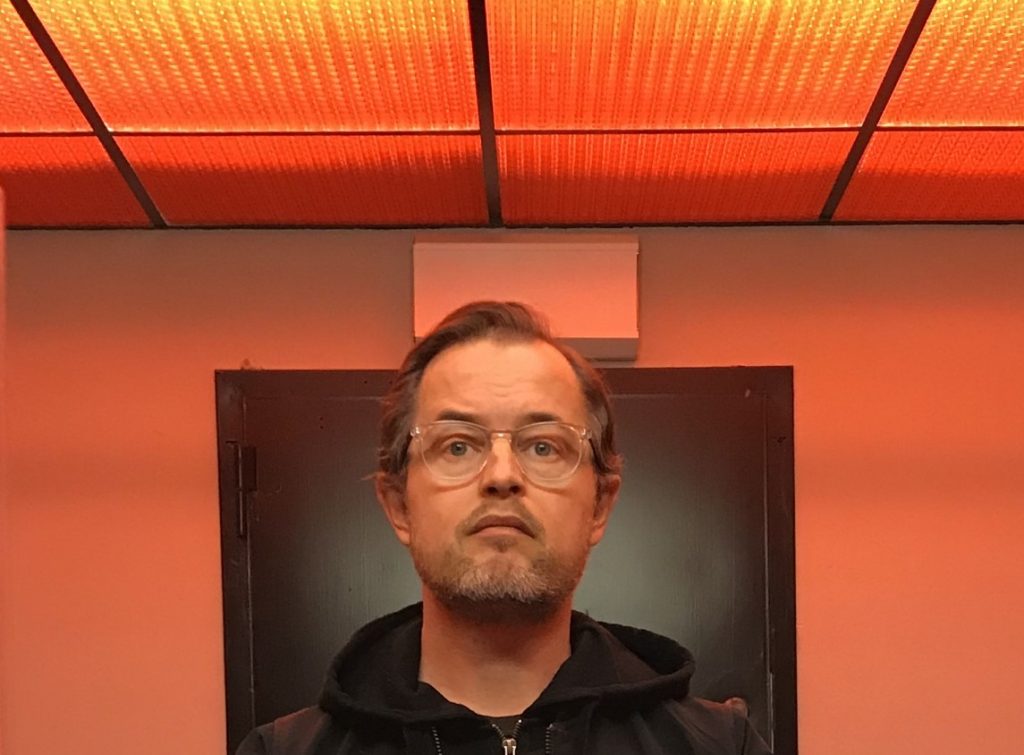
Tomas Nanne is in the art of uplifting the parts of the city that have become unnoticeable. The parts of the city we’ve forgotten what they looked like because after looking at them all the time, one day, we just stopped seeing them. Whether that’s the metro (tube or subway depending on where you’re from), or the Shell gas station you pass every day on the way to wherever you’re heading.
For many of us, these parts blend into one passive idea and relationship with the city, in which we just occupy it. But Tomas, a Swedish painter and graffiti artist based in Stockholm, pays homage to the city through his career and art practice. Tomas’ paintings and street art feel like new experiences of the familiar. His work involves re-framing the urban experience by showing you – with his acrylic paintings – what was already there, or by christening or re-painting dull cement or brick walls with masterful pieces of graffiti work.
Tomas also teaches art to budding artists in Stockholm, commenting that teaching art has, in this beautiful full circle way, taught him new things and challenged his own art practice. For the most part, Stockholm as a city seems to be a muse and a subject for Tomas where, in his paintings, we are able to witness the day-to-day, almost nitty-gritty experience of the city – the inner parts, the moving parts and working parts. It is not only the Gamla Stan, the Eiffel Tower or the Chrysler Building that make up the city, but the streets, terminals and buildings that if given the ability to speak would spout far truer experiences of what it was like to live and breathe in the city as a whole, rather than the city as a landmark.
Tomas’ neorealistic style helps to draw attention to the subjects and compositions. The frames Tomas chooses to capture and highlight are through his own visual focus and memory. He captures the characteristics that make the subjects visually pleasing: the straight edges, the colour and light changes, the synchronicity and geometry of the shapes. Looking at his paintings gives you a direct viewpoint, like you’re being let in to witness something special and intimate: the city through Tomas’ perspective, and the stories he is picking up on. As a spectator, not only do you feel in the middle of it, but you also feel like an onlooker the same way Tomas is.
Tomas’ art is for those who enjoy good art and for those who celebrate art in urban landscapes. Even more, it is for those wishing to get to know their cities and towns better, and for those who are listening to the stories their cities have to offer. What is it trying to say? What do you see?
In this interview we discuss whether there are rules that constitute good art, funny exhibition anecdotes and his unique and organic creative process. He leaves us with a renewed outlook and some poignant advice for struggling artists.
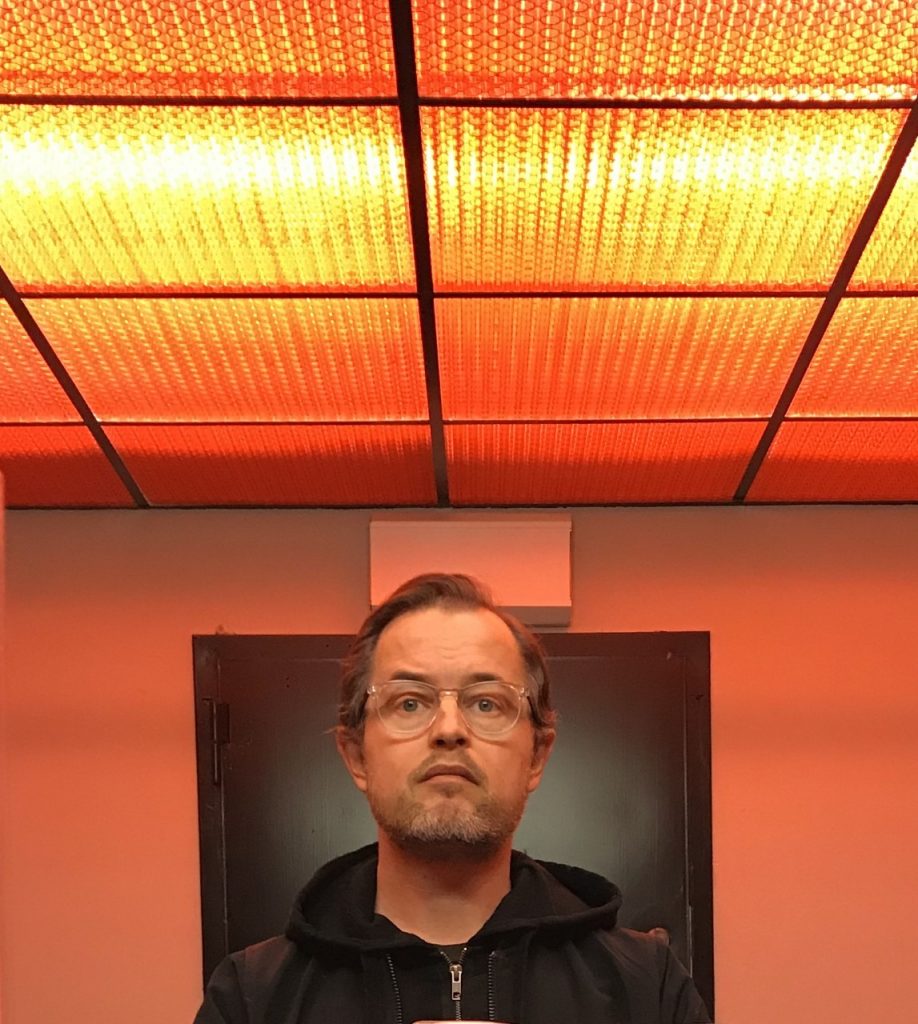
Let’s start with a little bit about you, where did you grow up? What’s the first thing you remember drawing or painting? At what point did you decide to pursue art?
I grew up in the northern suburbs of Stockholm among high-rise buildings, townhouses, train tracks…so my image world has always been very close to me.
I have no specific first memory of any image I created, I just know that I have been drawing and painting all the time for as long as I can remember, maybe it was when we snuck out and did our first graffiti painting in an industrial area near where I grew up. We were dead afraid that my friend’s dad would catch us, I wrote the DJ and the painting was more a “throw-up” than a piece.
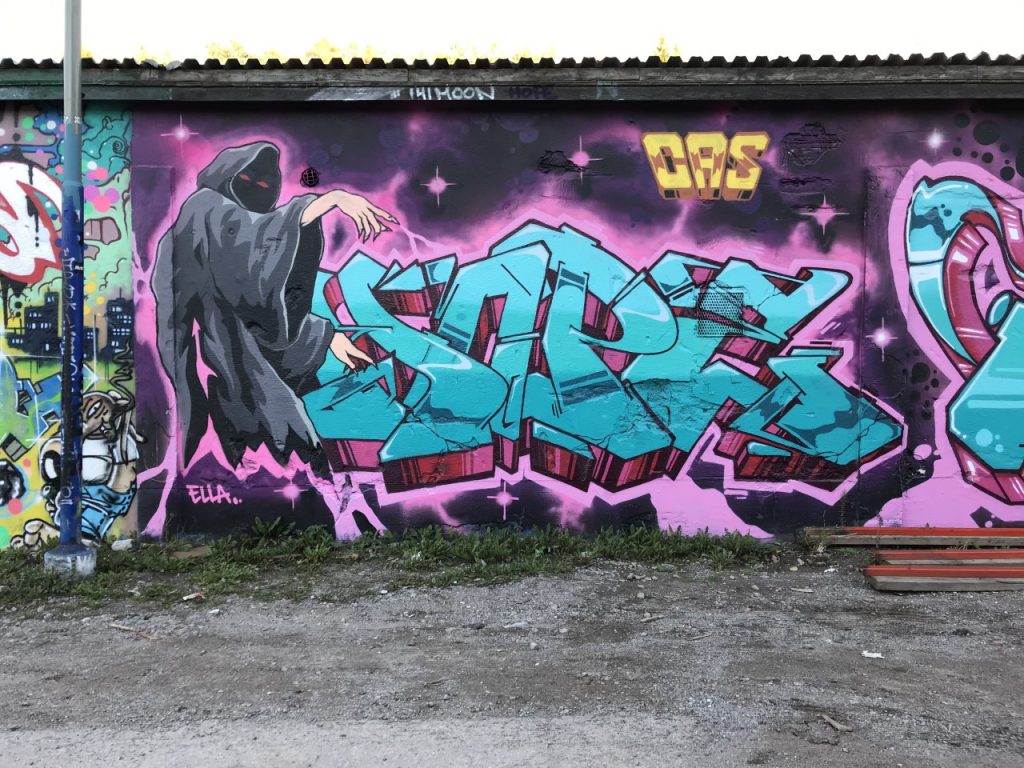
You teach art. How is that experience for you? What aspects of art can’t be taught do you think?
Teaching art gives me an incredible amount. Partly because it gives me a lot of positive energy and also because my students and I share the same process when we paint. Also, the different technical and creative choices we have to make to move forward and that I constantly need to evaluate my own knowledge.
Regarding what I think is difficult or cannot be taught is probably the feeling of succeeding. It cannot be taught or come from outside, it must come from within.
Perhaps also the willingness to cope with the artistry in the long run, not to lose focus on art and creation by getting lost in the career and economic aspects of it.
What makes a good work of art? Are there rules?
My opinion is that good art must come from muscle memory. When I see that the work has come from a long process of hard work, you look at how familiar the artist is with handling his materials and how he is able to express himself freely through those materials. The work must also have substance and make you think further, and get stuck with you.
When the artist’s intention with his work guides the viewer to new thoughts and at the same time gives an aesthetic experience, it is a good work.
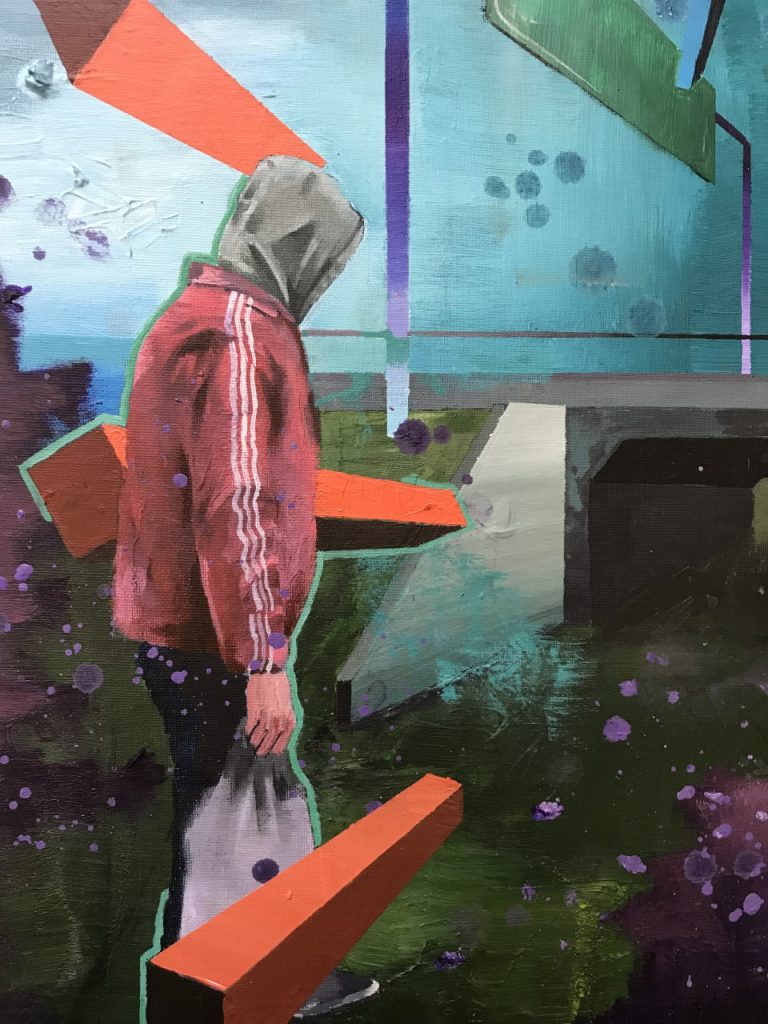
For me, I learned at a young age that when it comes to art, you can always fix it. What are the most valuable lessons in art for you?
[laughs] It’s so true, you can always fix it. I actually use this as a method, seeing significant mistakes as solutions.
The lesson I usually think about is to just focus on the happiness of being able to create. Everything else is just details, like: success, money, exhibitions, validation. Other than that, probably the best advice I’ve been given is to keep your subject world close to yourself, as something you live in or off.
Has an event/life decision ever affected or changed your art?
One life decision was when I stopped drinking. I became more active and focused and managed to work for longer periods in the studio. Plus, I got rid of all the other shit that stole my time that I should have spent on painting. My art became more honest then, there was no filter between me and what I created.
All the times I have been arrested for painting graffiti also led to me spending more time in the studio instead of on the street, and my art and skills developed quite clearly. Then there are all the fantastic exhibitions I’ve seen, I remember Pieter Doig’s exhibition in Louisiana a few years ago or when I visited the Vernedig Bienal for the first time and got an awakening in what art could mean.
There is power in drawing or capturing the ubiquitous – something that makes you look twice or go back and rethink or reshape what you previously considered normal. Tell us about your latest works, city compositions, city life snapshots. Why are you drawn to these images?
As I said before, keep your subject world close to you, these are the environments I’ve spent most of my life in and have the strongest attachment to. I think I want to lift all the places that others otherwise just pass or have in the corner of their eyes, to be able to do something else out of physical places that are otherwise just for use, to give them a chance to be looked at and experienced through another lens. Honor those moments and urban spaces though art.

Which artists do you look up to or inspire your work?
My friends who also paint and have a humble attitude towards artistry are my biggest source of inspiration. We share with each other and try to lift each other instead of being career hungry. Also, I strongly like the Danish graffiti painter Rens, he makes graffiti just as it should be – raw and real.
Cy Twombly, Helene Frankenthaler, Cecily Brown are some painters among many that I really like, their paintings grow the more I look at them. Kerry James Marshall is a real master!!
Do you ever become creatively stifled or uninspired? What do you do to remedy that?
Yes, I have before. I think it’s a natural part of being an artist. It’s something you need a method for, to avoid getting caught up in it too much and not be afraid of it when it happens.
When I feel good, my painting goes well. The motifs find themselves and the painting flows. When I feel worse, the color becomes like glue and I paint with obsessive tempo. When I end up there, I usually calm myself and ask myself why I paint, often I can go back to an old motif and do it all over again. Changing your environment and technique can also work. When I have a shitty day in the studio, I pack my backpack with spray paint and go out. That always gets me in a better mood and I get my creativity back.
In some of your paintings, like that of Skärmarbrink Station and one of the Shell gas station – you incorporate some spots and marks and in others you’ve used some spray paint. These almost make the image feel like a memento. Is this your intention? What is your intention?
I rarely paint from a model. The subjects and themes come from places I just passed or situations I was in. Often, my subjects are a collage of memories. Sometimes a photo is needed because my memory does not absorb all the small details but rather the atmosphere in the environment. My intention is to convey those memories through a painting.
Skärmarbrink Station is a metro station just south of Stockholm, I passed it daily for 12 years, I went and sat for a total of two full days only to observe. I’ve probably made 100 paintings of that station.
The Shell gas station is from the high-rise area where I grew up, in the northern suburbs of Stockholm. That particular place is so packed with memories so I just had to get it out and transform it into a painting.
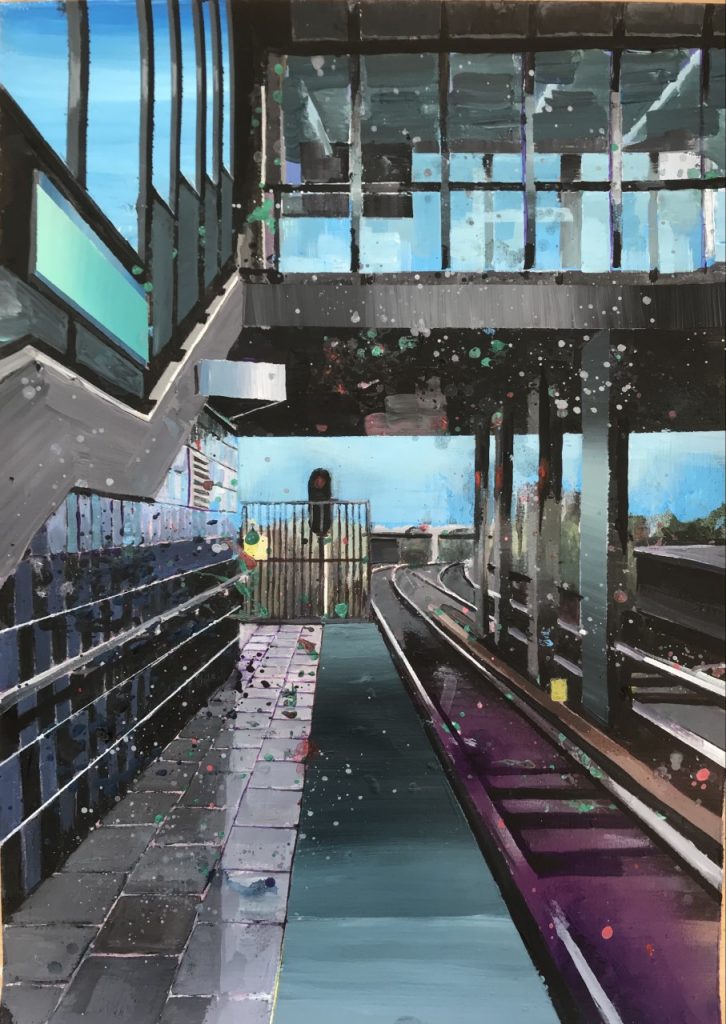
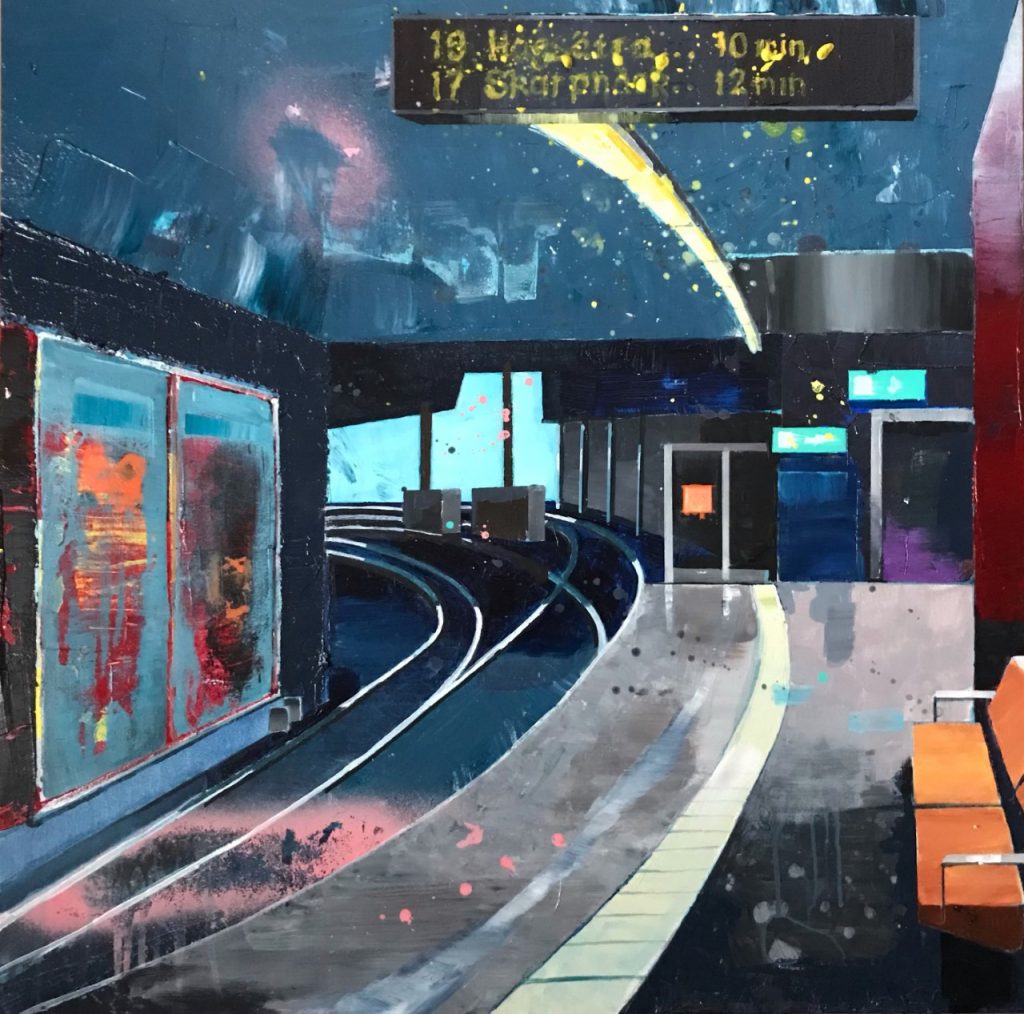
You’ve held quite a few solo exhibitions for your artwork in Stockholm, tell us some notable experiences you’ve had watching others experience your work.
There are a lot of funny memories. I once had an exhibition at an art gallery in Stockholm and I took all my paintings there without them being stretched. It was cruelly hot in the art gallery and when I worked to stretch all the paintings, I got so sweaty that I had to work in just underwear. In the middle of work, the gallerist comes in and gets a shock when he sees me, completely tattooed, sweaty and obsessively working to get all the paintings on the walls. We laughed until we were on the floor.
Another time, one person came in at one of my exhibitions and thought I was just another visitor. She told me how much she disliked my painting and thought everything sucked. I played along for a moment but could not hold back and started laughing, she turned completely red in the face and apologized, she did not have to do that. Everyone has a right to their own opinion. It all ended with us having a coffee and having a long conversation about painting in general.
Walk me through your creative process from conception to execution.
It always starts with me just hanging around somewhere, riding the subway, walking around in some suburb with no plan. Suddenly, a subject appears, a surface, an event that makes me stop. Often, I stand and observe what caught my attention for anywhere between 10 min and two hours. Then I let the image mature in my head before I start sketching and move the memory to the canvas. Sometimes the subject fits like a painting, sometimes it is better as just a memory.
When the subject works on the canvas, I work quickly, often at 30-minute intervals. When the painting has gone through a few intervals, I let it rest and the next time I look at it I know immediately if it will work or end up on the shelf. I almost always work on several paintings at the same time. I am restless and quickly get tired of a subject so it is good to have several in the pipeline.
I usually say that out of 20 paintings that I make, I choose 5 that I like. The others I paint over with a new memory.
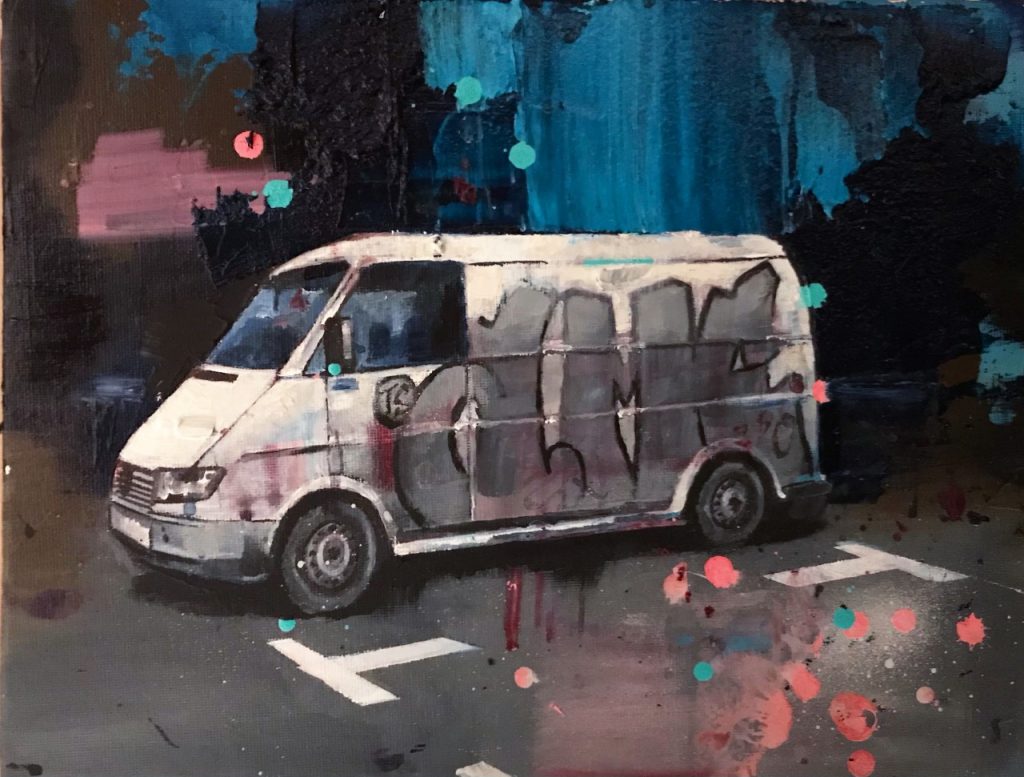
You also make cool graffiti on the streets of Stockholm. In the urban landscape, you’re pretty much covering all the bases. Street art, the neo-realistic paintings of the city, educating an entire young generation of students in the art world. Have you always lived in Stockholm? What is your relationship with the city as a physical environment and as a muse?
I have lived in Stockholm all my life except when I did military service and when I lived in Paris for a short period. The urban landscape has always piqued my interest, there is so much new to discover and to explore. The urban environment gives me so many opportunities. Walls to paint on, walls and shapes to paint by. Environments and places that I create a relationship with through my painting. It’s going to be an endless story.
How do you think COVID has affected the urban landscape, or your urban landscape?
I think my paintings were about social distancing long before COVID. There are either empty spaces without people or a maximum of two people on the paintings. Like an unexpected prophecy of what was to come. As an artist I usually work alone as well so I think everything is business as usual.
What are your future projects?
Next year I will have a solo exhibition at my gallerist at Helle Knudsen Gallery, a graffiti festival in southern Sweden next summer, then I will just keep on painting as much as I can, same as always.
What is the most important advice you give to your students or that you would give to any struggling artist?
Never give up. Find happiness in painting and don’t let bad criticism, thoughts of recognition or success bother you.
Continue to be hungry for the next painting.
Keep up with Tomas’ work through his Instagram: @tomasnanne








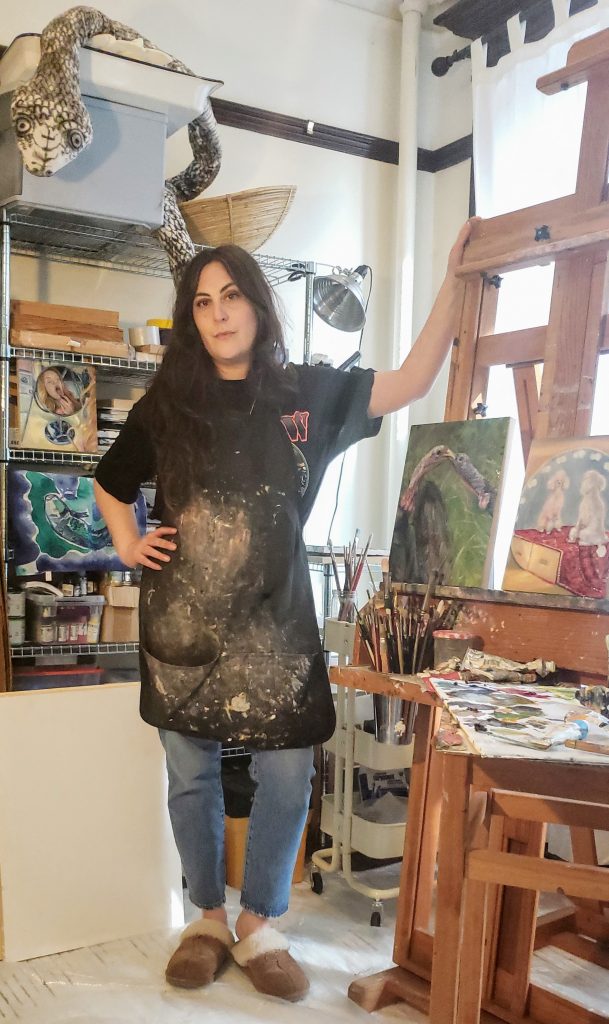
Responses